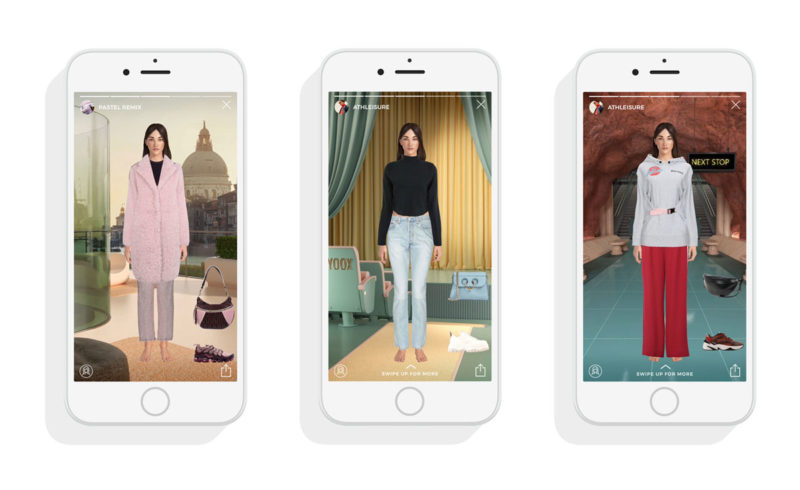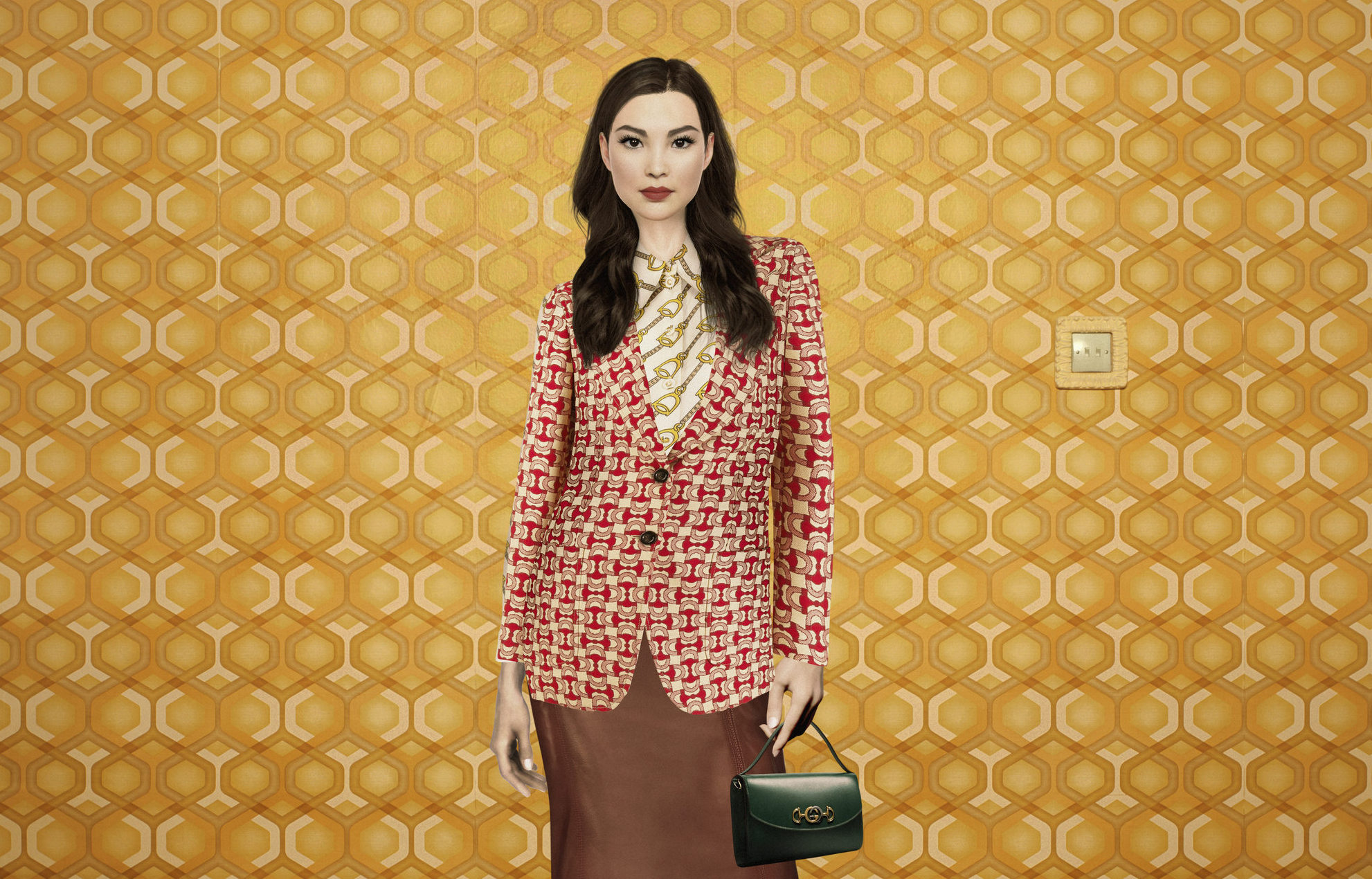
While virtual dressing experiences offer a way for consumers to express themselves and engage with product, do these digital interactions translate to sales?
As digitally driven millennials and Gen Zers become a greater force in the luxury business, labels and retailers are letting consumers virtually get dressed in high-fashion.
Most recently, Yoox has updated its YooxMirror mobile application with a personalised touch, enabling consumers to create and style an avatar that looks like them in garments from the retailer’s site. While virtual dressing experiences offer a way for consumers to express themselves and engage with product, do these digital interactions translate to sales?
"We have been first movers in combining fashion and technology since day one," said Alessia Crivelli, branding and communication director at Yoox. "When we launched YooxMirror, the first AI-powered virtual styling suite, our goal was to engage and entertain our customers.
"In response to the increasing in-app interactions, our next step has been to further exploit the potential of artificial intelligence and augmented reality technology to provide our customers with an innovative, personalised and truly unique shopping experience," she said. "They will now be able to interact with their own 3D avatar, enabling a more personal approach to the Yoox experience and allowing an even more individual style."
Styling games
YooxMirror originally launched last year. The artificial intelligence-enhanced styling app featured a default avatar named Daisy, who consumers could dress up. Daisy also became the face of Yoox’s Instagram, sharing her looks and lifestyle and posing with real-life influencers including Irene Kim and Caroline Daur.

Yoox Mirror. Image: Courtesy.
Now, YooxMirror is expanding to enable consumers to become their own avatar. Positioned as a virtual dressing room, the remodeled app that launched on Nov. 4 enables consumers to turn a picture of themselves into a 3D avatar.
This digital doppelgänger can then try on clothing in the Yoox app. Consumers can take photos of their avatar and share them on social media, allowing them to participate and play with fashion regardless of budget.
More than 250 new products will be introduced into the YooxMirror experience each week. The catalogue will use product attributes and algorithms to suggest other pieces that will pair well with what the shopper has already selected.
"On YooxMirror, once the avatar is created, users can mix-and-match outfits to see how clothes and accessories suit them and share their favorite looks with friends on social media or simply add the look to their dream box," Crivelli said. "We have seen that this generates both engagement and conversion.
"As for Daisy, results have been surprising. Since her takeover, followers and interactions with customers have grown very rapidly," she said. "Daisy, is a digital personae or a 'virtual explorer' as she likes to define herself, but she has succeeded in creating a dialogue with our followers.
"She has her personality, her ideas, her fashion preferences. She also has a sense of humor. She is digital, innovative and very stylish, just like Yoox."
Individuals’ presences in the digital world and on social media have become almost equivalent in importance to their physical personas. This initiative from Yoox enables consumers to show off status symbols and flex fashion in an entirely virtual experience.
How to turn dressing into a game
Drest, which soft launched earlier this year, is a luxury fashion styling game centered on a mobile app. Consumers take on the role of a fashion stylist, creating looks that match briefs and dressing a set series of avatars.
The app uses a point-based currency dubbed “Drest dollars,” which are earned by completing challenges. These points can then be used to “buy” fashion to add it to a virtual wardrobe. Consumers can also purchase the real-life versions of the styles seen on Drest through Farfetch.

Drest. Image: Courtesy.
"It's taken 20 years for the technology and manufacturing to democratise fashion but finally in the near future virtual dressing rooms combined with virtual assistants, trained by real stylists, will make common-place what was once reserved for the wealthiest people able to live or travel to urban centers," said Chad Vavra, managing director, innovation services at Isobar. "In the near future brands and retailers will be able to personally style every customer.
"The expectation is that access to the best products is now only a click away," he said. "Additionally younger customers want access to influencers. Virtual experiences give them that, and they give the influencers seamless distribution models that are on demand."
These avatar-based activations follow earlier forms of virtual dressing. Last year, Gucci tapped into the popularity of personalised avatars and mobile communication by being the first brand to partner with a new platform.
Users of the mobile application Genies, which integrates avatar-to-avatar communication with artificial intelligence, will be able to dress their avatars with luxury apparel from Gucci.
In 2015, mobile application Bitmoji similarly got a high-fashion makeover with the introduction of luxury apparel collections to its avatar creation platform. Bitmoji Fashion allows users of the app to dress up their virtual personas with in-season merchandise from the likes of Kenzo, Marc Jacobs and Alexander McQueen.
"We’re seeing platforms – like Instagram, Pinterest and Google – build experiences that prioritise discovery and better connect the best interests of the consumer – 'show me something new' – with the best interests of brands– 'show me new customers,'" said Leo Strupczewski, director of marketing at Curalate.
Do you need to know more about reaching new and younger clients?
"Augmented reality experiences, like virtual dressing, fit within those efforts – except, for luxury brands and retailers, they’re able to own discovery by building these experiences themselves," he said. "The opportunity here is both in the data those experiences will create – what’s engaging consumers, what’s being purchased – and in the network effects that sharing this content on social will generate.
"Consumers will always gravitate to immersive experiences. Look at Instagram, look at Tik Tok. These types of experiences feel novel right now, but if consumers take to them, they’ll deliver much in the same way Instagram has: They’ll help brands connect with consumers in ways that live outside the transactional elements of ecommerce, and they’ll help build a more fashion-conscious consumer earlier – something that should be of real value to luxury brands."
Virtual goods
Luxury brands have an opportunity to engage their future alpha gen consumers through virtual worlds, since this youngest age group is living a life centered on gaming.
Younger than Gen Z, alpha gens are growing up with social media and digital channels as a given. During a panel at the FT Business of Luxury Summit, an executive from C Ventures discussed the potential for selling digital goods to buyers who have not yet entered into luxury buying ages.
"At its core, these types of experiences are no different than the user-generated content consumers are monetising today – they’re expressions of self that help other consumers better connect with a brand and understand a product," Strupczewski said. "If brands leverage that content in ways that make it shoppable and easily discoverable, they’ll be able to create a path to purchase that consumers find engaging."
In addition to fashion-centric experiences, luxury brands are also leaning into gaming, creating purchasable items for players to showcase their style in-game.
French fashion house Louis Vuitton is embarking on a multichannel partnership with game developer Riot Games, as luxury brands begin to take note of the vast opportunity within the esports industry. The Louis Vuitton and Riot collaboration begins with the League of Legends World Championship, with the fashion label creating a traveling trophy case for the esports tournament. As part of the collaboration, Louis Vuitton has designed premium skins, which players can purchase to outfit their virtual avatar.
Both Roberto Cavalli and Balmain linked with Kim Kardashian: Hollywood to offer players high-fashion wardrobes befitting the reality television star. "Luxury brands should absolutely be experimenting with these new experiential technologies," said Scott Anderson, senior consultant at FitForCommerce.
"The best setting for that is in an innovation lab setting with actual prospective customers rather than directly in-store," he said. "That's because there needs to be a truly relevant connection between the experience and the brand as opposed to simply 'something cool.'
"Millennials and Gen Zers are nothing if not brutally honest in their feedback, which is precisely what a luxury brand needs to hear to correctly calibrate itself to these younger customers," he said. "So, even if an experiment 'fails' the unexpected learning that will come from it will be invaluable to the marketing planning process.
"The brand that finds a success through this process will come to market with more than just this feature as a competitive advantage."
This article was originally published on Luxury Daily. It has been adapted for clarity and style and is republished with permission.
Cover Image: Yoox Reloaded. Image: Courtesy.

